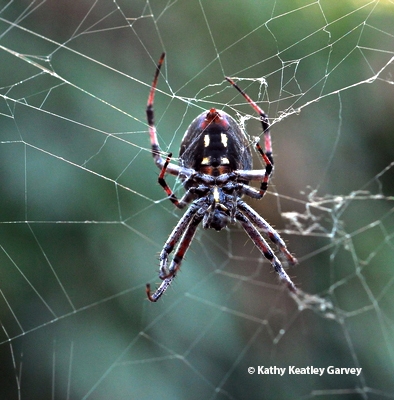
"Tens of millions of years before the orb web evolved, spiders used major ampullate silk in various forms (lampshades, tangles, sheets, funnels, etc.)," according to AAS member Eileen Hebets of the University of Nebraska, who co-hosted the open house as part of her National Science Foundation grant, "Eight-Legged Encounters," aimed at providing community outreach programs, especially for youth. "The first webs were horizontal and were not orbs. Currently, scientists believe that orb web evolved only once."
The open house kicked off the AAS meeting on the UC Davis campus. Arachnologist Jason Bond, associate dean of the UC Davis College of Agricultural and Environmental Sciences and the Evert and Marion Schlinger Endowed Chair in Insect Systematics, UC Davis Department of Entomology and Nematology, is co-chairing the June 26-30 conference.
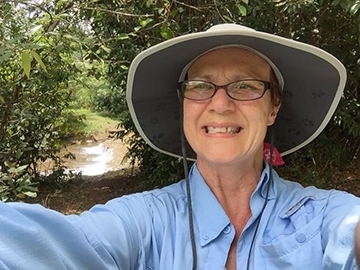
"It was about about cribellate and ecribellate silk--or sticky and not-sticky silk," said Keller, a Bohart Museum scientist who studied for her doctorate with UC Davis distinguished professor Lynn Kimsey, director of the Bohart Museum. "Some spiders produce silk and place small drops of 'sticky glue' along the silk fibers in a web and that glue traps prey when they hit the web. Other spiders produce 'fuzzy' silk, for lack of a better word, and they spin it very close together. The station was set up to have glue silk and non-glue silk."
As Hebets explains on her website:
- Cribellate silk is produced from numerous tiny silk glands underneath a specialized spinning organ called the cribellum.
- The cribellum is derived from spinnerets (the anterior median spinnerets) and its surface is covered by hundreds- thousands of tiny, elongate spigots which each produces an extremely thin single fibril of cribellate silk (~0.00001mm thick). All spigots act together to produce a single cribellate thread made up of thousands of silk fibrils. All araneomorph spiders were once cribellate, but the cribellum has been lost numerous times.
- Cribellate spiders also possess a row of toothed bristles – the calamistrum – on the metatarsal segment (2nd to last) of the last leg (4th walking leg).
- The combination of flagelliform silk threads and aggregate silk protein glue ~136 million years ago represents a major explosion in spider species numbers. Spiders that combine flagelliform and aggregate silk proteins are in the superfamily Araneoidea. In these spiders, a sticky liquid silk is carried on fibrous silk support lines.
- In summary, cribellate (wooly) and ecribellate (sticky) catching silks increase the prey holding efficiency of webs that act as snares or traps. They represent completely different evolutionary solutions to the same problem.
The procedure:
- Take a piece of pre-cut yarn.
- Pick up one piece of confetti.
- Toss the confetti at the yarn…does it stick?
- On one-half of the yarn, add droplets of glue and toss the confetti at the yarn…does it stick?
- On the other one-half of the yarn, comb it out using the eyebrow brush.
- Once the yarn is combed out, toss a piece of confetti at it…does it stick?
"It was nice to see so many folks out to an event about arachnids," Keller said. "We normally have many people out visiting the Bohart on our weekend open houses. But this was different because it focused on 8-legged invertebrates. It was such a great event getting back in person and interacting with families. It made me realize how much I have missed these outreach events and open houses where we share our passion for insects and science."
The next Bohart open house is set from 1 to 4 p.m., Saturday, July 16 and will celebrate 50 years of the California dogface butterfly (Zerene eurydice) as the state insect. The state Legislature designated the butterfly as the state insect in 1972. Keller and Bohart associate Greg Kareofelas will share their expertise on the insect. The event is free and family friendly.
The Bohart Museum, located in Room 1124 of the Academic Surge Building, houses a global collection of eight million insect specimens, plus a live "petting zoo" (Madagascar hissing cockroaches, stick insect and tarantulas) and an insect-themed gift shop.
Attached Images:
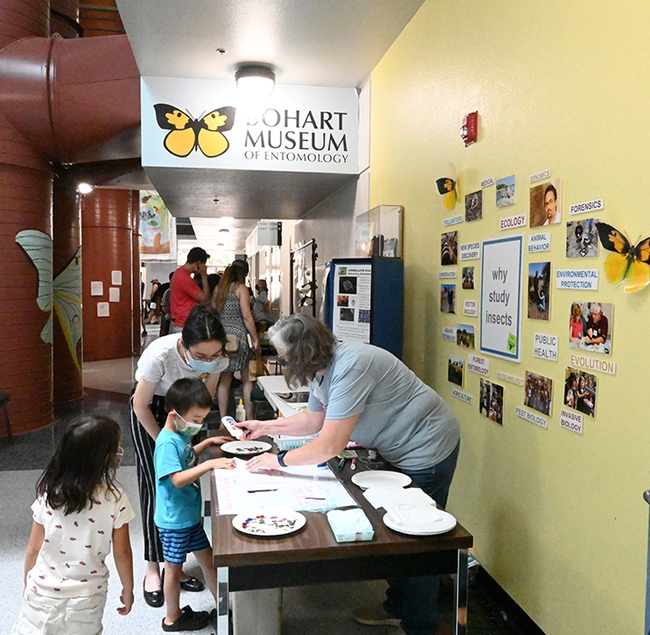
Entomologist Fran Keller, a professor at Folsom Lake College, demonstrates sticky and non-sticky spider silk with participants at the June 25th open house in the UC Davis Academic Surge Building. (Photo by Kathy Keatley Garvey)
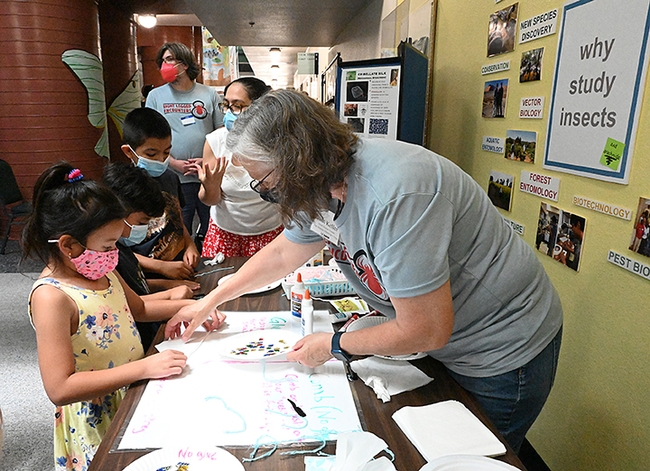
Entomologist Fran Keller assists a participant at the American Arachnological Society station on sticky vs. non-sticky silk. (Photo by Kathy Keatley Garvey)
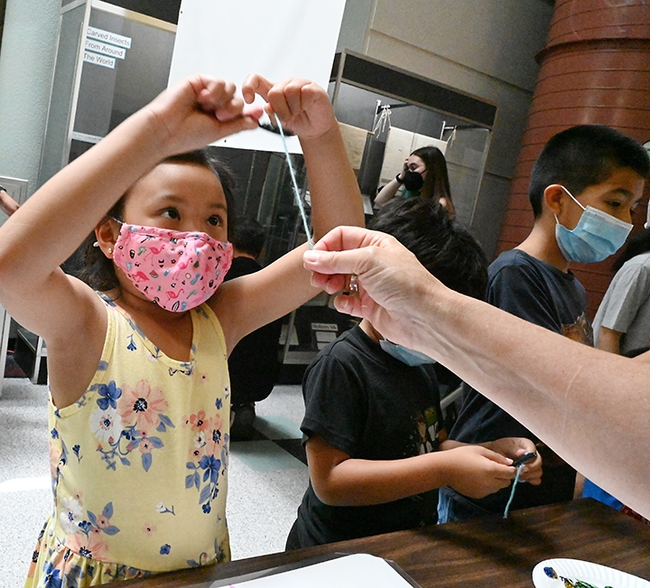
A participant combs yarn as part of the hands-on activity in the sticky vs. non-sticky spider silk station. (Photo by Kathy Keatley Garvey)
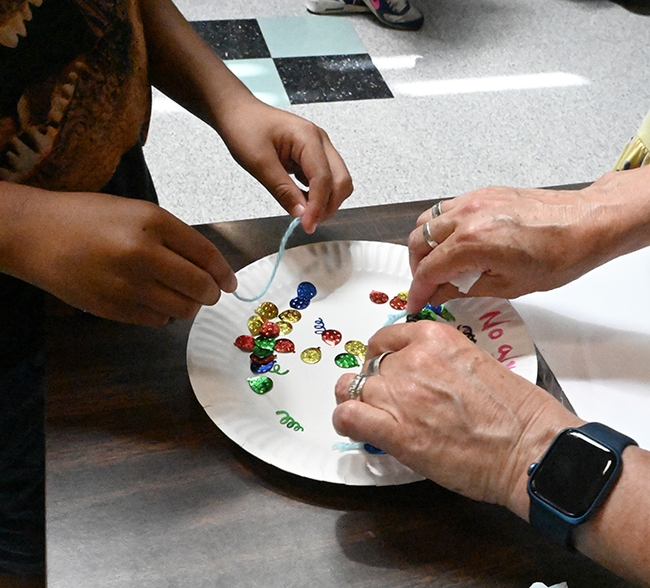
A participant strings yarn across the confetti to see if it sticks. (Photo by Kathy Keatley Garvey)